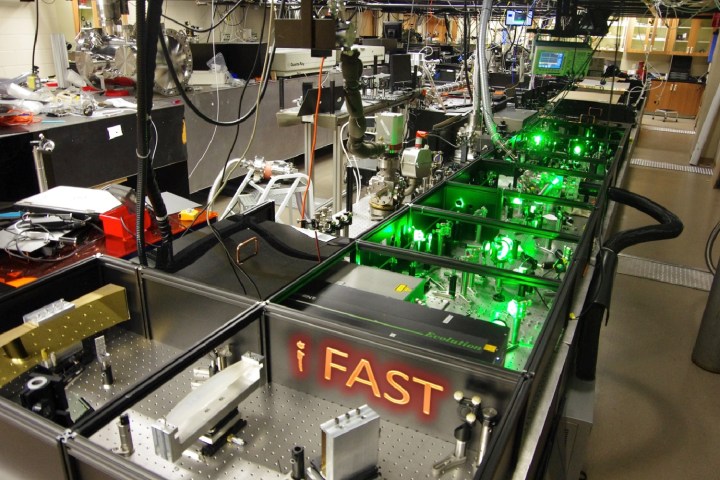
Much like high-speed cameras are able to record ultra-slow-motion video of normally fast events, attosecond light pulses let scientists take sharp recorded images of fast-moving electrons in atoms and molecules.
“Attosecond science started a revolution in 2001,” Zenghu Chang, a professor of physics at the University of Central Florida, told Digital Trends. “In that year, attosecond light pulses were first demonstrated experimentally. In the last 16 years, attosecond pulses have been generated primarily by interacting intense femtosecond Ti:Sapphire lasers with noble gases, a process named high-order harmonic generation. One of the issues for applications is the photon energy spectral range that attosecond pulses cover. Attosecond light generated by using Ti:Sapphire lasers centered at 800 nanometers as the HHG driver is in the extreme ultraviolet region of the electromagnetic wave. In this work, a long wavelength laser centered at 1,700 nm was used, which allows the generation of attosecond soft X-rays. The spectral range is 2 times broader that what has been achieved with Ti:Sapphire lasers.”
Aside from bragging rights at the next attosecond drinks mixer, the demonstration is important because the spectrum employed reaches carbon K-edge, the low end of the so-called “water window,” which opens the door for studying the attosecond process using core to valence level transitions in atoms and molecules. In terms of practical applications, this work could be used to better understand processes such as photosynthesis, which could lead to superior solar panels. It could also lead to faster computer chips through the study of electronic processes in solid-state materials.
So how are the losers of the previous attosecond light pulse record holding up? Pretty well, actually. The 2012 record was also also set by Chang’s lab, with a 67-attosecond extreme ultraviolet light pulse.
Can he beat his record one more time? “That is certainly one of our research goals,” he said. “The next milestone is 24 attosecond, the unit of time in atomics physics. It is also important to push the spectral range of attosecond light to hard X-rays, which supports even shorter pulses. Needless to say, there are many technique challenges, [which is] a good thing for new students.”
A paper describing the work was recently published in the journal Nature Communications.
Editors' Recommendations
- NASA’s IXPE mission gets an X-ray view of the famous Crab Nebula
- This black hole is creating enormous glowing X-ray rings
- NASA Chandra images highlight the beauty of the universe in X-ray wavelength
- Astronomers puzzled by a flashing X-ray mystery in the Fireworks galaxy
- Real-time ray tracing to come to Windows 7 through DirectX 12 support


